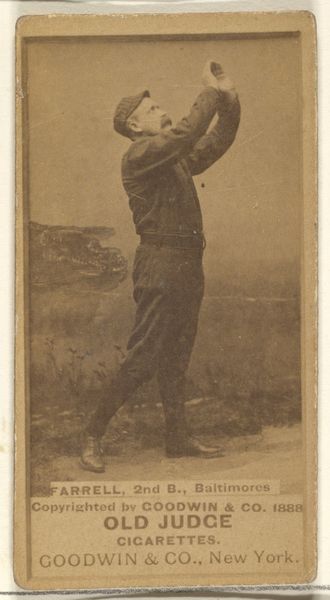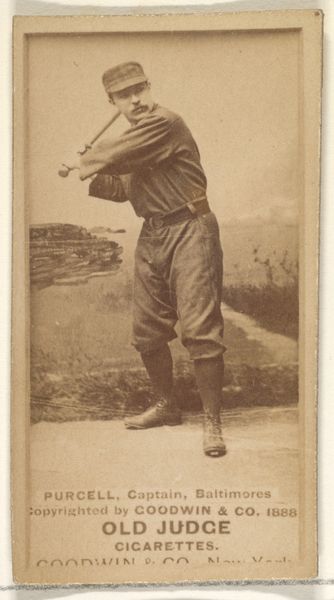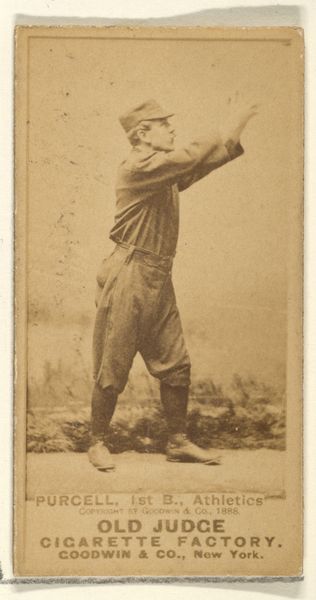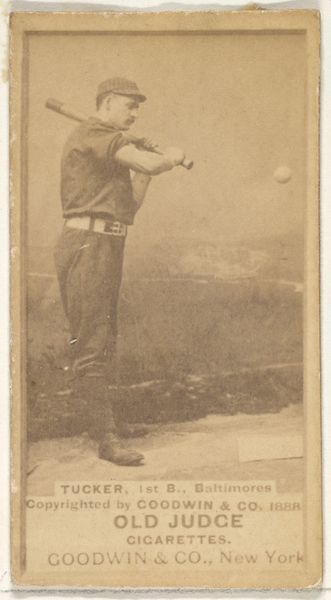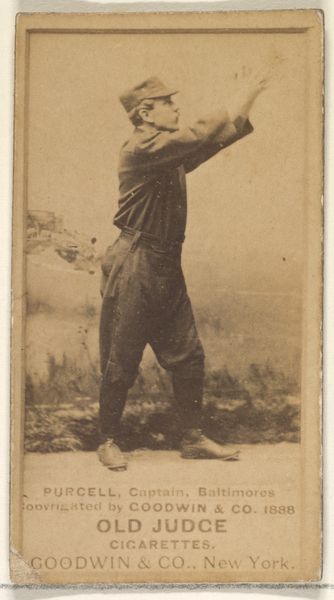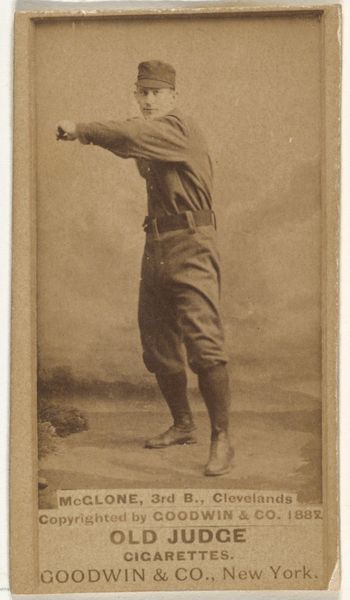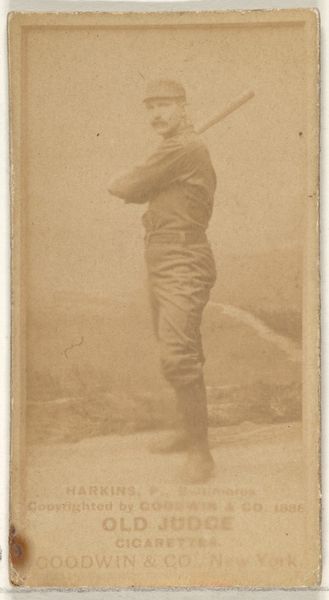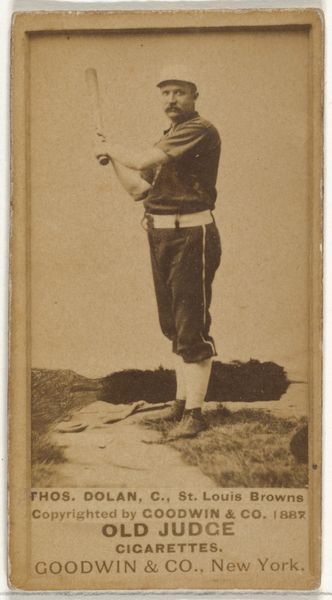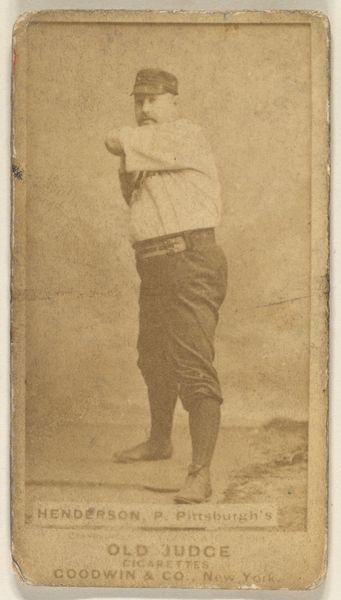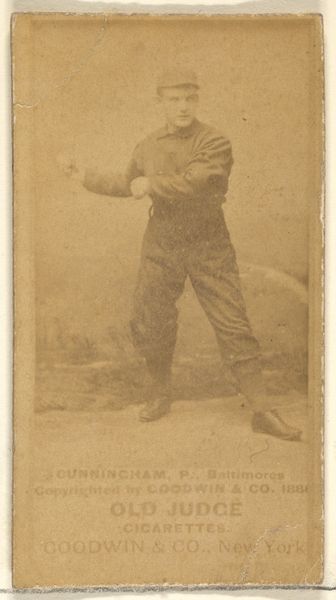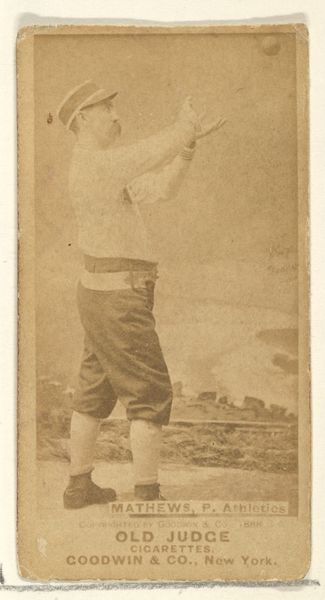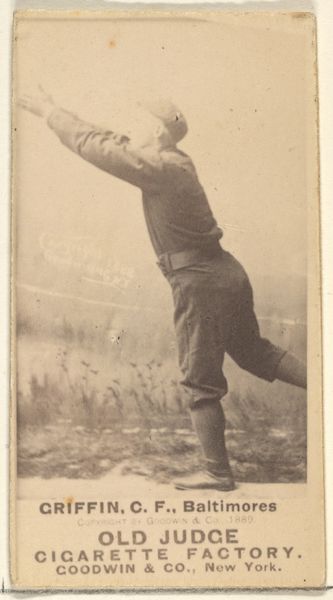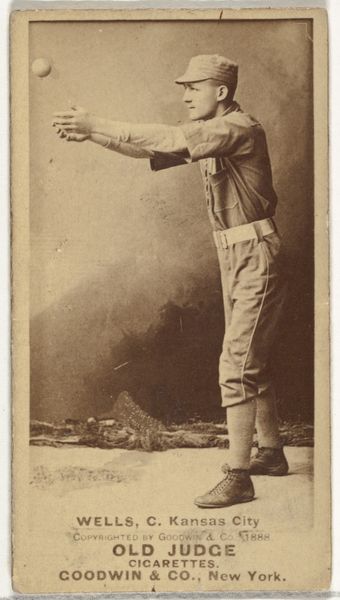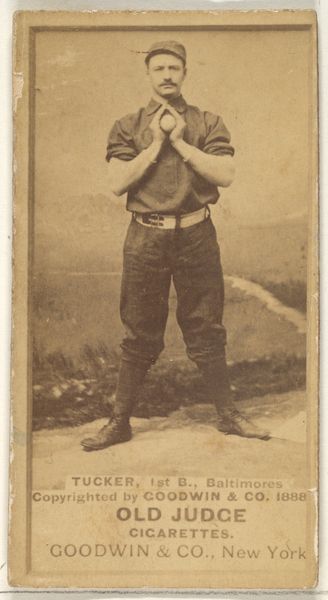
Shindle, 3rd Base, Baltimore Orioles, from the Old Judge series (N172) for Old Judge Cigarettes 1888
0:00
0:00
Dimensions: sheet: 2 11/16 x 1 3/8 in. (6.9 x 3.5 cm)
Copyright: Public Domain
Curator: Immediately striking is the monochrome palette, verging almost on sepia. The tones create a delicate study of light and shadow on the figure’s form. Editor: This albumen print, entitled "Shindle, 3rd Base, Baltimore Orioles, from the Old Judge series (N172) for Old Judge Cigarettes," was produced in 1888 by Goodwin & Company. It's currently part of the collection at the Metropolitan Museum of Art. Curator: Observe the careful attention to the figure’s pose, how his raised hands create a dynamic verticality in the composition. It’s visually compelling, hinting at the athletic activity but stylizing it within the confines of the picture plane. I’m curious about the subtle blur; how was this captured in a single frame? Editor: These were trade cards initially included in cigarette packs, meant to stiffen the packaging. What's particularly fascinating is how they capitalized on baseball’s rising popularity, becoming some of the earliest examples of sports advertising. Curator: Ah, so function dictates form in a consumer-driven culture! I am also observing elements borrowed from the Japanese ukiyo-e prints. The simplification of the background planes and clear depiction of human subject in its surrounding point toward the influences from this form. Editor: Exactly. Mass production and the public fascination with athletes coalesced here. The cards were collected and traded, mirroring how fans engage with the sport. It is worth noting how it was perceived as an art object at all, how the industry took advantage of artistic styles for better visual communication with customers. Curator: Therefore, the success rests on the ability to deliver the object, making it aesthetically palatable and visually concise for an advertisement in a larger distribution stream. Looking closely again, it is evident this image operates less as candid moment and more as consciously constructed scene. Editor: Indeed, it reveals so much about the period’s values—commodification of sports figures and its relationship to consumption of tobacco. We’re seeing how institutions like museums give it a new context now. Curator: I have begun looking at this artwork with a newfound appreciation for the layered significations embedded within what first seems a simple portrait. Editor: Likewise, it is important to acknowledge the value and message behind baseball card collecting in the history of advertisement.
Comments
No comments
Be the first to comment and join the conversation on the ultimate creative platform.
